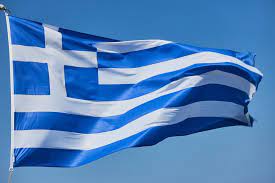(This article originally appeared in Crain’s Business Chicago)
Chicago Board Options Exchange is finally letting go of a bit of its trading floor past.
The exchange operator for the first time this month is converting a quarter of its former trading floor space into a work area for employees, said Ed Provost, chief operating officer of parent company CBOE Holdings.
The company will be playing catch-up with nearby futures exchange operator CME Group, which stopped trading on about a third of its trading floor last summer and is now trying to sublease it.
Trading has been shifting to ever-faster electronic lines and computer screens for nearly two decades, leaving formerly boisterous, open-outcry pits quiet. While a few persist, only a third of CBOE’s volume takes place on the trading floor at its South Loop headquarters today. Now it’s remaking some of the space in 21st-century fashion for 50 to 70 technology workers.
“It’s all part of outfitting our building with the most modern conveniences,” Provost said in an interview.
Visitors used to be able to view CBOE’s third-floor trading area from a fourth-floor gallery, but that hasn’t been in use for years and there hasn’t been as much to see anyway.
The Chicago company isn’t closing any pits for the makeover. It’s already done that. At the height of floor trading in 2001, CBOE had 77 trading pits, which it calls “crowds.” Now there are just 15, and only two of those are very active: the pits for trading the company’s exclusive CBOE Volatility Index and Standard & Poor’s 500 index products.
That doesn’t mean that CBOE’s overall trading volume has flagged. On the contrary, it has climbed over the past two decades thanks to expanding electronic volume.
CBOE is moving a handful of pits to accommodate the build-out, shifting them closer to the VIX and SPX pits at the southern end of the 44,000-square-foot trading floor to help insulate employees from the noisy traders screaming buy and sell orders.
Provost said the new cubicle community is meant to appeal to young tech types. There will be “collaboration space,” where employees can stand for meetings and use multipurpose Mondopad video screens for conferencing. The area might even have a foosball table, he said.
The company isn’t hiring workers to fill the space but moving them from other parts of its operation.
At CME’s trading floor, just across the street from CBOE, there was talk of the company working with other Chicago organizations to create a citywide financial technology hub. Those plans apparently have fallen through or are at a standstill. CME spokeswoman Laurie Bischel said the company is now looking to sublease the approximately 70,000 square feet that includes the former trading pits, plus a former CME auditorium and offices.
CME closed the pits where futures contracts were traded but kept open those for trading in options on futures contracts, with a few exceptions. The company said that 8 percent of its average volume still takes place on the floors.
At CBOE, the VIX and SPX pits that remain active tend to be venues for institutional customers’ bigger and more complex trades and, somewhat surprisingly, are heavily populated by representatives of the city’s high-speed trading firms, such as Citadel. For big orders, the pit often offers brokers better pricing and the ability to split an order among several traders.
“I was just on a playing field where I was at a disadvantage,” said Greg Kraigher, an independent trader who formerly traded in CBOE’s options pits but left the floor in 2013. “You’re kind of just getting the scraps.”
Traders can buy and sell options contracts on CBOE’s proprietary VIX and SPX indexes only at the Chicago Board Options Exchange, giving that first equity options exchange a leg up on the more than a dozen rivals that came into being after it.
“Those two products really distinguish CBOE from all the other equity options exchanges,” said Hazem Dawani, CEO of Chicago-based OptionsCity Software. “They’re very unique to the CBOE, and CBOE will do anything to maintain their dominance through these products.”
CBOE’s floor volume has plateaued at the 30 percent mark since about 2012. As long as there’s that kind of demand for open outcry, the pits will stay open, Provost said. “We have no timeline” for closing the venue, he said. “It will be our customers who will dictate to us when there is no longer a need for a trading floor.”






